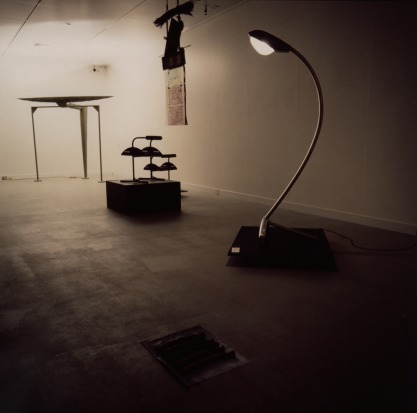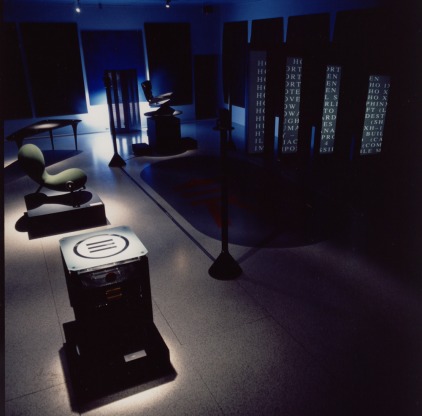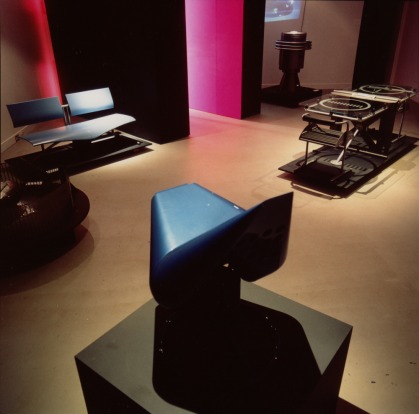deus ex machina


Deus Ex Machina is an event which brings together the work of a diverse group of designers, artists and technicions. While the work in question ranges from furniture and appliances through to sculpture sound and images, it shares a common concern with the relationship between man, technology and the machine in the later twentieth century.
In the 50s, American hopes for an impossibly uncomplicated future were carried abroad in the sleek curves of Cadillacs, the trouble-free folds of polyester and the lurid bondage of plastics. The machine and it's products became icons of an optimism which had seemed impossible in the decade before.
That future soured (inevitably) in the light of the cold war. The machine carried the burden of our disappointment while at the same time becoming a symbol of our worst fears. The real implications of the playful atom symbol (which was so naive and yet such an inspiring device) began to dawn, as did the realization that heavy industry and the march of technology cared little for global economics, political concerns or the environment.
As we approach the end of this century, the presence of technology in our everyday lives is arguably greater than even the 50s vision anticipated, yet it incorporates a deep ambivalence.
It is generally accepted that the machines in our lives must be discreet and that where they intrude it is as a feature, like a car, rather than as a homogeneous part of the domestic environment. There are complex codes about the degree of "machineness:" a device can exhibit depending on how and where it is used.
This ambivalence towards technology has become so strong a part of the general psyche that we can begin to see evidence in films, design, art - in fact all media - of sporadic attempts to come to terms with it. Such outbursts of technological anxiety are typified by films like Bladerunner, Terminator and Brazil: by the literature of J.G Ballard and William Gibson: and the designs of Phillipe Starck and Shin Takamatsu.
Deus Ex Machina is not a celebration of the machine but rather an attempt to come to terms with what seems likely to remain an uneasy alliance between man and technology. This sense of revealed unease informs all the work in the exhibition and indeed that of the larger group whose work is samples in this catalogue.
Dominic Lowe
Michael Trugeon
Paul Schütze
Melbourne 1989
